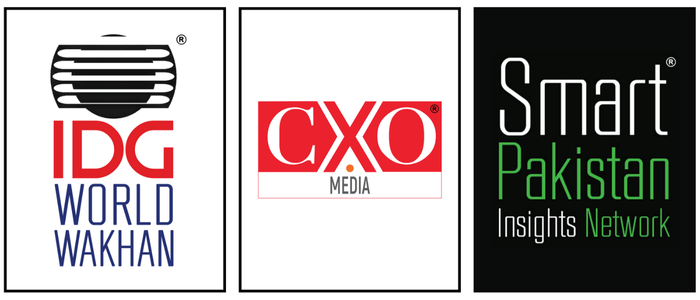Every year McKinsey & Company publishes a map of the technological future, a report designed for boardrooms and investment committees but increasingly read by anyone trying to make sense of where digital transformation is headed. The Technology Trends Outlook 2025 arrives at a moment when business leaders are grappling with dizzying acceleration on one hand and structural constraints on the other. Artificial intelligence has captured imagination and market capital, but its scaling raises as many questions as it answers. Data centers are straining against infrastructure bottlenecks. Regulators are stepping in with new rules. Geopolitics is rewriting the global supply chain. In this environment, a glossy set of charts and projections is not just intellectual fodder; it becomes a compass, albeit one that requires critical reading.
McKinsey frames its 2025 edition around thirteen “frontier technologies” grouped into three broad clusters: the AI Revolution, the Compute and Connectivity Frontiers, and Cutting-edge Engineering. This framing is deliberate. Artificial intelligence is not positioned as one among many; it is the gravitational center of the narrative. Compute and connectivity are cast as supporting infrastructure for AI’s hunger. Robotics, bioengineering, and mobility are described not as independent marvels but as the physical extensions of AI’s reach. Even space and energy are refracted through the lens of what they can enable or sustain in an AI-saturated world. To read this report is to be reminded that McKinsey is not just cataloguing trends; it is writing a story about what the next digital decade will look like, and in that story AI is the protagonist.
The most striking subplot in that story is the arrival of what McKinsey calls agentic AI. These are not the copilots that business executives have grown used to in the last two years, the assistants that help draft emails or analyze spreadsheets. Agentic AI refers to systems that can plan and execute multistep tasks independently, effectively behaving like virtual coworkers. The statistics are arresting: a nearly tenfold surge in job postings mentioning agentic AI skills between 2023 and 2024, and over a billion dollars in equity investment into startups building these systems. For CIOs this is both tantalizing and terrifying. Tantalizing because the promise of offloading entire workflows to autonomous digital agents could mean productivity gains of a magnitude unseen since the early days of enterprise computing. Terrifying because the governance questions are staggering. Who is accountable when a digital coworker makes a costly error? How do you explain decisions made by an opaque model acting without explicit prompts? McKinsey frames these issues politely, but the underlying message is blunt: enterprises are moving toward a workplace where humans and agents must coexist, and the architecture for that coexistence is not yet in place.
Beyond the hype of agents lies the broader reality of artificial intelligence as an industry-defining force. McKinsey estimates that equity investment in AI reached over 124 billion dollars in 2024, buoyed by megadeals like SoftBank’s record forty-billion-dollar injection into OpenAI. Seventy-eight percent of companies globally now report using AI in at least one function. Yet only a tiny fraction — one percent — describe their deployments as fully mature. This tension between experimentation and scale is the central paradox of AI in 2025. Enterprises are enthusiastic, investors are pouring in capital, and the technology itself is advancing at a breakneck pace with multimodal models, reasoning engines, and small domain-specific architectures. But organizational readiness lags behind. Most companies are stuck in pilot purgatory, unable to move from proof-of-concept to production. The obstacle is not the code but the culture: insufficient governance, shortage of skilled talent, and reluctance to reengineer workflows.
Infrastructure is another thread woven throughout McKinsey’s outlook, though often overshadowed by the glamour of AI. The report highlights the rise of application-specific semiconductors designed for machine learning workloads, the continuing growth of hybrid cloud and edge architectures, and the expansion of advanced connectivity from terrestrial 5G and 6G to satellite-based networks. What sits behind these developments is a quieter but more urgent story: strain. Data centers are consuming more energy than entire small nations. Water usage for cooling is sparking local resistance. Power grids in major hubs from Texas to Singapore are reaching their limits. Supply chains for GPUs are constrained, and lead times are stretching into years. McKinsey acknowledges these issues as bottlenecks, but the implications may be more profound. The question is not only whether enterprises can afford the compute but whether the planet can sustain it. For CIOs, what was once a back-office procurement concern is now a board-level strategic challenge. Cloud contracts, chip sourcing, and energy partnerships are no longer tactical details; they are determinants of competitive viability.
Cybersecurity and trust are treated in the report not as afterthoughts but as the new gatekeepers of digital adoption. The argument is simple but powerful: scaling technologies like AI will not succeed unless stakeholders — employees, customers, regulators — believe they are safe, transparent, and accountable. In a reversal of old logic, security is no longer just about preventing loss; it is about enabling growth. An enterprise may build the most sophisticated AI platform, but without strong governance and transparent oversight, regulators may block deployment and customers may refuse adoption. This is a shift that CIOs must internalize. The conversation in the boardroom is moving from “what is our risk tolerance?” to “what level of trust must we guarantee in order to expand?”
The “cutting-edge engineering” cluster brings together robotics, mobility, bioengineering, space, and energy.
These fields are at varying levels of maturity. Robotics is closest to mainstream deployment, with logistics, warehousing, and manufacturing all seeing autonomous systems move from pilot projects to production lines. Mobility remains politically fraught, with electric vehicles and autonomous transport advancing technically but constrained by regulation and infrastructure. Bioengineering glitters with potential, from personalized medicine to genomic breakthroughs, but remains limited to specialized sectors. Space technologies are drawing private investment but are still dominated by national programs. Energy and sustainability technologies, by contrast, are both urgent and fast-moving, especially in renewables, storage, and grid optimization. The unifying theme is convergence. None of these trends exist in isolation. Robotics is supercharged by AI vision systems. Bioengineering relies on high-performance compute. Space technologies depend on advances in connectivity. Energy innovation is both a requirement for and a beneficiary of digital transformation. For the enterprise CIO, the takeaway is to look not just at one’s own industry vertical but at the ripple effects of breakthroughs in adjacent domains.
McKinsey distills its findings into five cross-cutting themes: the scaling of autonomous systems, the evolution of human–machine collaboration, the unexpected difficulty of scaling, the rise of tech nationalism, and the strategic centrality of responsible innovation. Each of these deserves extended reflection. Autonomy changes the very nature of workforce planning, raising questions about the ratio of humans to agents and how accountability will be distributed. Human–machine collaboration highlights the importance of interfaces, moving from clunky dashboards to seamless multimodal interaction. Scaling challenges remind us that technology adoption is as much about physical infrastructure as it is about software code. Tech nationalism reflects the new reality of geopolitics intruding into every procurement decision, from chip sourcing to cloud hosting. Responsible innovation, once dismissed as soft talk, is now a matter of competitive edge: enterprises that cannot prove ethical guardrails will find themselves excluded from markets.
What is less explicit in McKinsey’s report is the uneven geography of these trends. The outlook is global, but the implications vary sharply by region. In Asia-Pacific, the narrative is not only about adoption but about competing models of digital growth. China’s state-directed investments in semiconductors and AI contrast with India’s private-sector driven expansion in digital services. Southeast Asia is emerging as a testbed for 5G, fintech, and mobility solutions, but faces chronic talent shortages. For Pakistan, the context is different again. The country sits at the cusp of digital acceleration, with mobile penetration above eighty percent and fintech adoption rising rapidly through platforms like Raast. Yet the structural gaps are real: limited high-performance compute capacity, energy insecurity, and fragmented governance frameworks. McKinsey’s trends read aspirational in this context. AI pilots exist, but scaling is hindered by unreliable infrastructure and skill shortages. Robotics is discussed, but manufacturing ecosystems are not yet ready. Energy innovation is urgent but underfunded.
For Pakistani CIOs and policymakers, the lesson is to read the Technology Trends Outlook as a benchmark of direction rather than an immediate playbook. The long-term opportunities are immense — AI for agriculture, digital trust for financial inclusion, edge connectivity for disaster resilience — but the journey will be constrained by systemic factors that the report only hints at. What does all of this mean for enterprise leaders who must turn glossy outlooks into operational reality? It means that AI is inevitable but uneven, that governance is as critical as capability, that infrastructure is not background but destiny, and that talent will remain the ultimate bottleneck. It means that convergence across industries will accelerate, blurring the lines between digital and physical, between software and biology, between earth and orbit. And it means that executives must pair the optimism of consulting projections with the skepticism of lived experience, recognizing that maps are not the territory and that charts rarely capture the messy, political, resource-constrained reality of organizational life.
How far can agentic AI be trusted? How will we power the data centers of tomorrow? Can enterprises build trust at the same pace as they build capability? Which regions will accelerate, and which will lag behind? For CIOs in New York and Nairobi, in Bangalore and Karachi, these are not theoretical questions. They are the very real dilemmas of the next digital decade. And it is in grappling with those dilemmas, not in admiring trend charts, that the future of technology will be decided.
Read the full report here:
Follow the SPIN IDG WhatsApp Channel for updates across the Smart Pakistan Insights Network covering all of Pakistan’s technology ecosystem.





